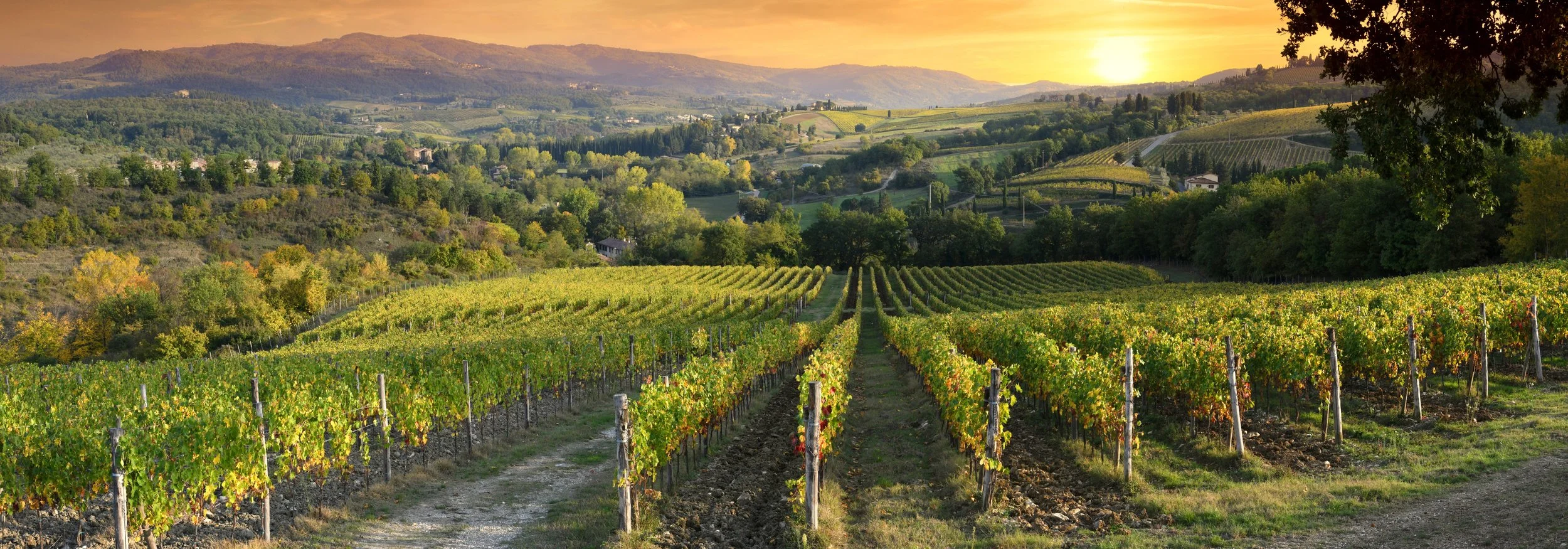From Soil to Glass: Biodynamic Viticulture in Italy
By Georgia Baillieu, Savvy Travels Co.
Published October 31, 2025
The information provided in this article is for informational purposes only. Earth Forward Group is not affiliated with, endorsed by, or compensated by any of the companies, products, or websites mentioned herein. We do not guarantee the accuracy, suitability, or performance of any referenced websites or products.
Photo: Savvy Travels Co.
The sun is setting over Tuscany’s vine covered hills, as local farmers turn to the lunar calendar to determine when harvest should begin. Italian wine makers have long been guardians of the land, choosing an organic approach to agriculture in order to boost productivity and guarantee soil and plant health. Biodynamic viticulture goes a step beyond, creating an environment where soil, plants, animals, and even cosmic forces work in harmony to produce healthy vines and nutrient rich soil.
What is Biodynamic Viticulture?
Biodynamic Viticulture is rooted in the scientific spiritual approach to agriculture presented by Rudolf Steiner, an Austrian scientist and philosopher, in the 1920s. While there are some similarities to organic farming methods, the biodynamic methodology takes on a more holistic framework. Steiner proposed the concept that a farm is and should be treated as a self-sustaining organism, a closed-loop system that integrates cover crops, animals, and compost to create not only a healthy yield, but ecological balance as well. The method avoids synthetic and chemical fertilisers that are detrimental to the natural environment, replacing them with organic preparations made from animal, plant, and mineral ingredients. These preparations are used alongside herbal composts made from plants such as camomile, yarrow, and nettles, creating a rich humus which helps to nourish the soil.
Another distinctive aspect of the biodynamic viticulture method is the consideration of lunar cycles. Just like the effect on tidal movements, it is believed that the moon’s distance from earth and its gravitational force can influence the growth of and sap flow within a plant, ultimately altering the quality of the wine. Producers schedule farming activities like pruning, harvesting, and bottling based on the lunar phases in order to enhance growth and vitality and to optimise the final product.
Photo: Savvy Travels Co.
Biodynamic Viticulture at Tenuta Sanoner
While biodynamic viticulture is based on principles that have been around for centuries, it gained traction in Italy in the 1930s. This was soon followed by the establishment of the Association for Biodynamic Agriculture in 1947. The Association’s objectives are to promote research, training, and dissemination of biodynamic farming practices. Still today the Association runs refresher and training courses, conferences, seminars, farm tours, and other initiatives aimed to inform others of a more sustainable farming method.
Perched on a hill in Bagno Vignoni, within Tuscany’s Val D’Orcia area, Tenuta Sanoner has proudly adopted the biodynamic approach to their wine production. Established in 2009, they are strong believers that the enriched soil and healthy resilient plants produced with this methodology, make for a more genuine product with authentic flavours that reflect their surrounding terroir.
Like many other biodynamic farms, Tenuta Sanoner uses two fundamental preparations, Horn Manure and Horn Silica. Horn Manure is made from cow manure which is left to ferment inside cow horns underground during winter. It is then mixed with rain water and sprayed on the plants to boost soil fertility and stimulate root growth. Horn Silica is prepared in a similar way to Horn Manure, but the horns are instead filled with finely crushed quartz powder before being buried. The Horn Silica is then also mixed with rain water and when applied to the plants, is used to support photosynthesis and improve resilience. Tenuta Sanoner also have a family of pigs living on the property, a cross-breed of farmed and wild pigs, that graze in a nearby field and help to produce quality fertiliser for the vineyards.
How to Determine a Wine is Authentically Biodynamic
While there are many wine producers claiming to be biodynamic, not all have received official certification. When looking to buy biodynamic wine with formal accreditation, the two primary seals to look for are:Demeter and Biodyvin. Demeter, while not a wine specific certification, is the gold standard for biodynamic farms and products internationally. Biodyvin, on the other hand, is a wine-specific certification limited to European wines. Both certifications require that the principles of Biodynamic Viticulture are rigorously followed: strictly no use of synthetic chemicals, closed-loop farming practices, the use of biodynamic fertiliser and compost preparations, and adherence to the calendar. Annual inspections take place to make sure that producers maintain compliance.
Choosing a wine produced with Biodynamic Viticulture methods may not only taste better, but helps to support sustainable farming practices globally. Every glass you pour is a quiet endorsement of farming that protects the planet and deepens the character of the wine.



